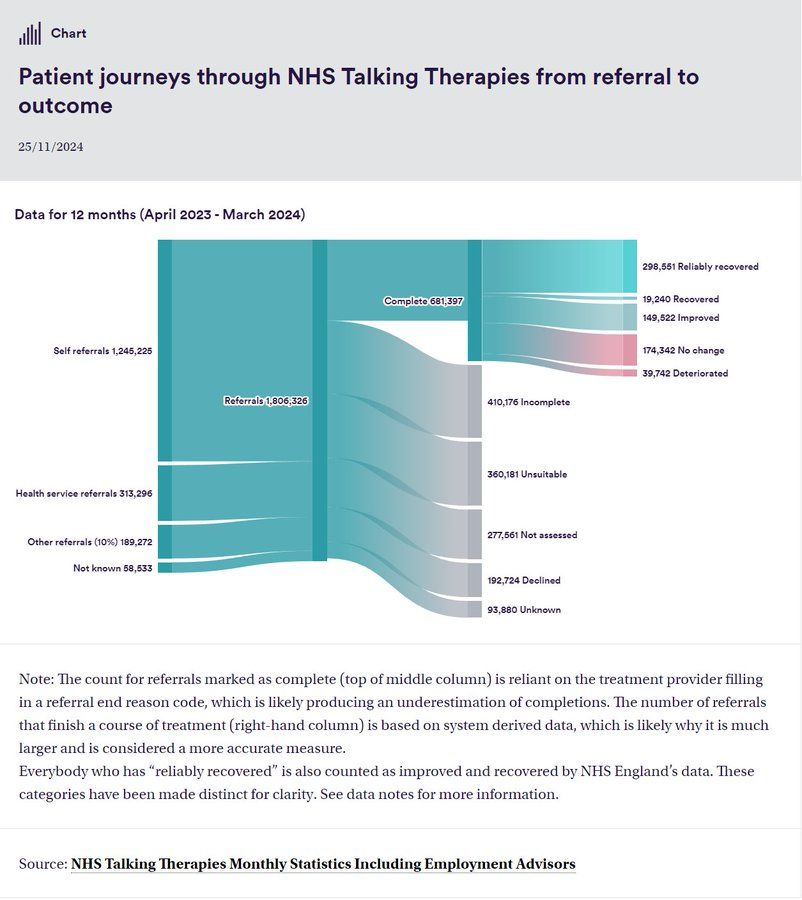#NHSTalkingTherapies is a crucial resource for many struggling with depression and anxiety, and a unique offering as an example of public mental healthcare. It's imperative that it be made more resilient to attrition.
Read here for the full piece: www.nuffieldtrust.org.uk/news-item/do...

#NHSTalkingTherapies is a crucial resource for many struggling with depression and anxiety, and a unique offering as an example of public mental healthcare. It's imperative that it be made more resilient to attrition.
Read here for the full piece: www.nuffieldtrust.org.uk/news-item/do...
Wasted resource at the front door needn’t be the reality - are individuals put off by the lack of treatment choice? (34% of all appointments in 2023/24 were for CBT.) Why are so many considered unsuitable? Many questions, like these, need to be answered.
Wasted resource at the front door needn’t be the reality - are individuals put off by the lack of treatment choice? (34% of all appointments in 2023/24 were for CBT.) Why are so many considered unsuitable? Many questions, like these, need to be answered.
Of the ~1.8 million people who sought help from #NHSTalkingTherapies in 2023/24, only 17% (approximating 300,000 people) underwent a complete course of treatment AND reliably recovered.
Of the ~1.8 million people who sought help from #NHSTalkingTherapies in 2023/24, only 17% (approximating 300,000 people) underwent a complete course of treatment AND reliably recovered.
Looking at the data for 2023/24, the trouble starts after a referral is logged - many were considered unsuitable (~20%), many left the treatment incomplete (23%), some were not assessed at all or declined what they had been offered.

Looking at the data for 2023/24, the trouble starts after a referral is logged - many were considered unsuitable (~20%), many left the treatment incomplete (23%), some were not assessed at all or declined what they had been offered.
However, what hasn’t changed is the proportion of all individuals referred to the service who completed treatment. That has been roughly 38% for the past decade. So, what is happening between referral and completion?

However, what hasn’t changed is the proportion of all individuals referred to the service who completed treatment. That has been roughly 38% for the past decade. So, what is happening between referral and completion?
Concrete plans to grow the service have been in the works since 2019/20, with higher targets for staffing and access year on year. And indeed, the number of referrals made to the service have increased, as have those completing a course of treatment.
Concrete plans to grow the service have been in the works since 2019/20, with higher targets for staffing and access year on year. And indeed, the number of referrals made to the service have increased, as have those completing a course of treatment.

